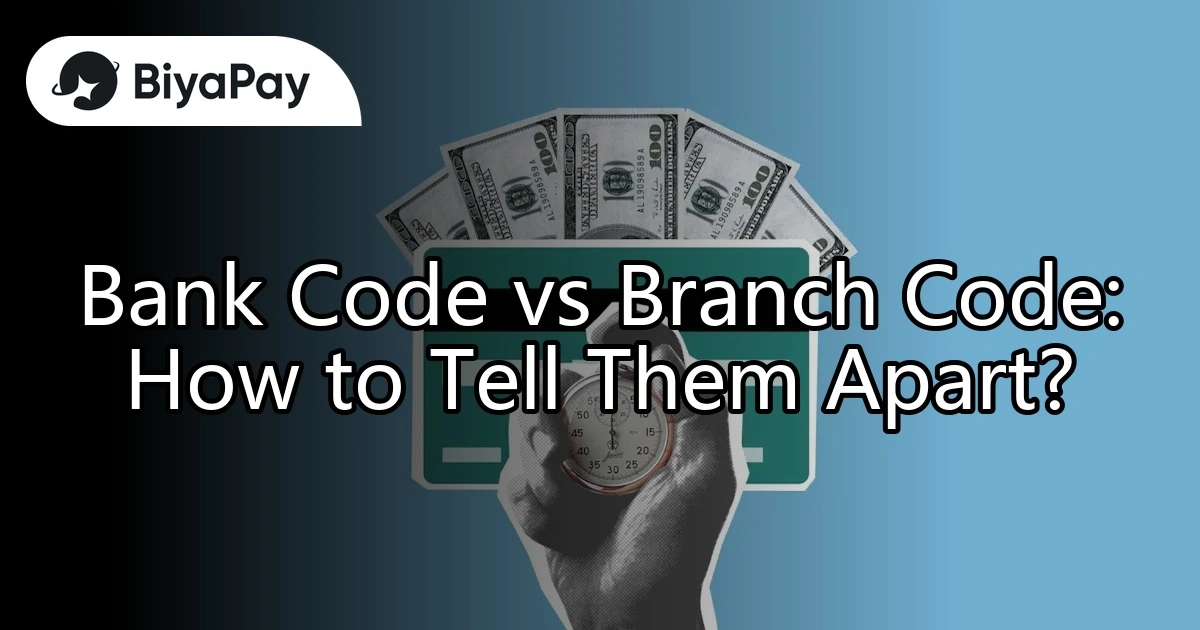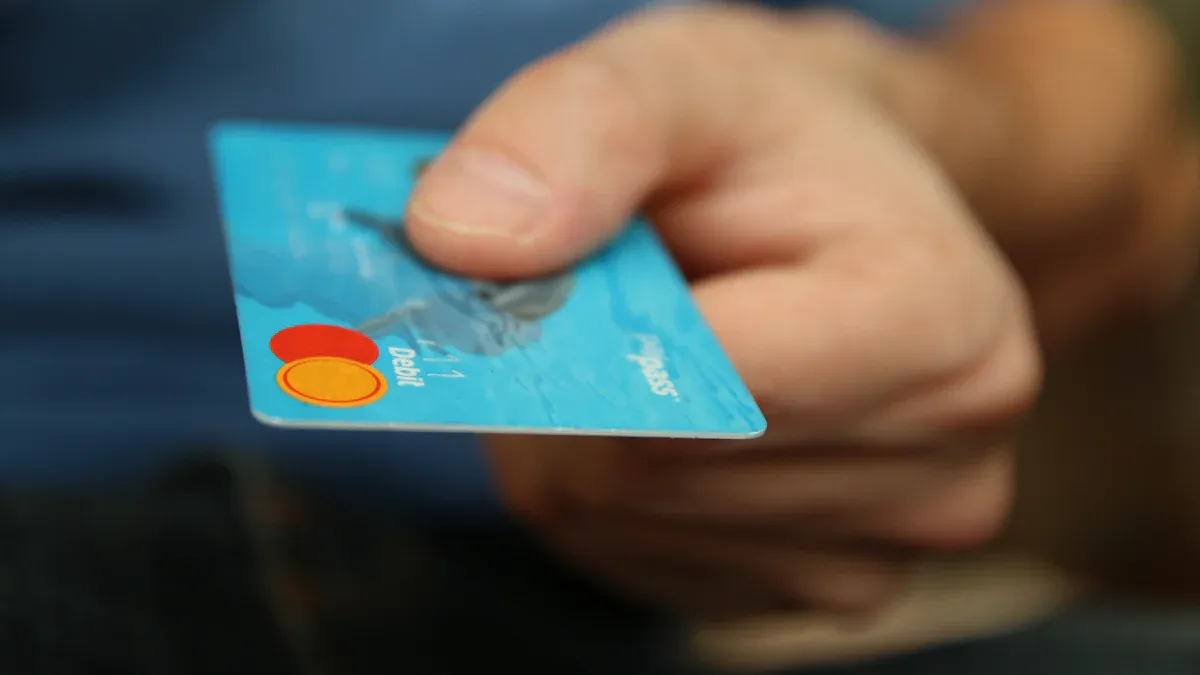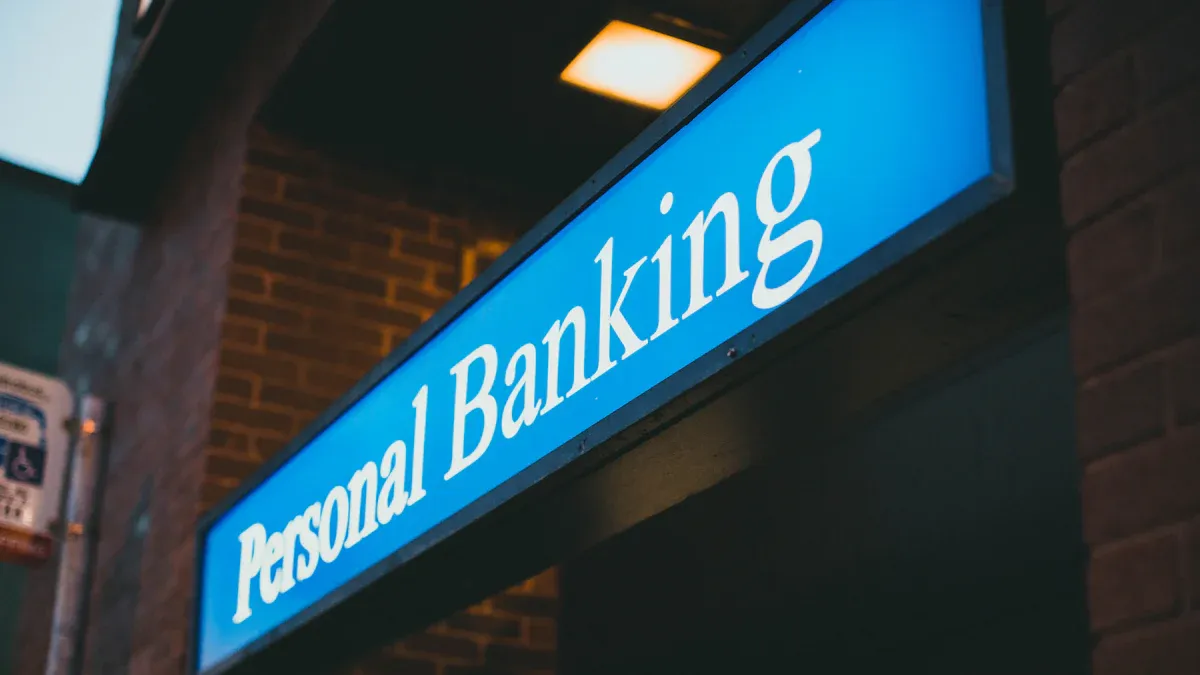- EasyCard
- Trade
- Help
- Announcement
- Academy
- SWIFT Code
- Iban Number
- Referral
- Customer Service
- Blog
- Creator
Bank Code vs Branch Code: How to Tell Them Apart?

Image Source: unsplash
The bank code represents the entire bank, while the branch code represents the specific branch you choose. You just need to remember: when filling out forms, enter the bank code and branch code separately, for example, when looking up Standard Chartered branch codes, don’t confuse the two.
Key Points
- The bank code represents the entire bank, and the branch code represents a specific branch; both must be entered separately to ensure funds are accurately credited.
- Different banks have varying requirements for branch codes; some require the branch code to be combined with the account number, so check carefully before filling out.
- You can find bank codes and branch codes through bank statements, online banking, or official websites; if in doubt, proactively contact the bank to avoid transfer errors.
Main Differences

Image Source: pexels
Bank Code
You will find that the bank code (Bank Code) is a set of numbers used to identify the entire bank. Each Hong Kong bank has a unique bank code. You often need to enter this code during transfers, account opening, or online banking. The bank code is usually three digits. For example:
- Standard Chartered Bank: 003
- HSBC: 004
- Hang Seng Bank: 024
- OCBC Wing Hang Bank: 035
The main purpose of the bank code is to let the system know which bank you’ve chosen, not which branch. As long as you enter the correct bank code, the funds will go to the right bank. You can find this code on the bank’s website, bank statements, or online banking platform.
Tip: The bank code only represents the bank itself; no matter which branch you choose, the bank code remains the same.
Branch Code
The branch code (Branch Code) is used to identify the specific branch you’re associated with. Each bank has many branches, and each branch has its own unique branch code. You often need to enter both the branch code and bank code when opening an account, making transfers, or setting up automatic transfers. The branch code is typically three digits. For example:
- Standard Chartered Central Branch: 003 (bank code) + 614 (branch code)
- HSBC Mong Kok Branch: 004 (bank code) + 128 (branch code)
The role of the branch code is to allow the bank’s system to accurately direct your transaction to the correct branch. This is especially important for some banks, as certain account numbers need to be combined with the branch code, or errors may occur.
You can refer to the following table to understand the bank codes, branch codes, and account number formats of different banks:
| Bank Name | Bank Code | Branch Code | Account Number Format and Instructions |
|---|---|---|---|
| OCBC Wing Hang Bank | 035 | 802 | Account numbers are usually 12 digits; the branch code 802 must be combined with the account number. |
| Ant Bank | 393 | 753 | Account numbers are 14 digits; the branch code 753 must be combined with the account number. |
| Citibank | 250/006 | 390/790 | Account numbers are 10-11 digits; 8-digit account numbers must include the branch code at the start. |
| Bank of Communications (Hong Kong) | 382 | N/A | Account numbers are 11-12 digits; no bank code required. |
| LIVI Bank | 388 | N/A | Account numbers are 12 digits; no bank code required. |
| CMB Wing Lung Bank | 020 | N/A | Account numbers are 11 digits; no bank code required. |
| MOX Bank | 389 | N/A | Account numbers are 11-13 digits; include the first three digits of the account number. |
You can see that different banks have different requirements for branch codes. Some banks (e.g., OCBC Wing Hang Bank, Ant Bank, Citibank) require you to combine the branch code with the account number; others (e.g., LIVI Bank, MOX Bank) don’t require a branch code.
Remember: The bank code represents the entire bank, and the branch code represents the branch you choose. Both are essential, or the funds may not be credited correctly.
Practical Applications

Image Source: unsplash
Transfers and Account Opening
When you perform transfers, open accounts, or use online banking in Hong Kong banks, you often need to enter both the bank code and branch code. Entering these codes correctly ensures funds are credited accurately. For example, if you want to transfer funds from HSBC to Standard Chartered’s Central Branch, you need to:
- First enter Standard Chartered’s bank code (003).
- Then enter Standard Chartered’s branch code (e.g., 614 for Central Branch).
- Finally, fill in the recipient’s account number.
If you only enter the bank code without the Standard Chartered branch code, the bank system may not identify the correct branch, leading to a failed or delayed transfer. When opening an account, bank staff will ask for the branch code to correctly set up your account details. When setting up automatic transfers on online banking platforms, you must also enter the bank code and branch code separately.
Tip: Each time you fill out bank details, double-check the bank code and branch code, especially Standard Chartered branch codes, to avoid errors affecting fund transfers.
Lookup Methods
You can find bank codes and branch codes through various methods. The most common ways include:
- Bank Statements: Your monthly bank statements typically list your branch code.
- Online Banking: After logging into online banking, you can find the bank code and branch code on the account details page.
- Bank Card: Some banks print the branch code on the back of the bank card.
- Official Website: You can visit the bank’s official website to check the branch list and find the required branch code.
Below is a reference table of bank codes for common Hong Kong banks to help you look them up:
| Bank Name | Bank Code |
|---|---|
| Standard Chartered Bank | 003 |
| HSBC | 004 |
| Hang Seng Bank | 024 |
| Bank of East Asia | 015 |
| Bank of China (Hong Kong) | 012 |
When looking up Standard Chartered branch codes, you can go directly to Standard Chartered’s official website, select the “Branches and ATMs” page, enter the region or branch name, and find the correct Standard Chartered branch code. You can also call Standard Chartered’s customer service hotline for inquiries.
Note: Branch code formats may vary slightly between banks. When filling out, use the official bank data to enter the correct branch code, especially Standard Chartered branch codes, to avoid errors.
Standard Chartered Branch Code
When handling Standard Chartered-related transactions, you often need to use Standard Chartered branch codes. This code is critical for transfers, account opening, and setting up automatic transfers. You can follow these steps to find and correctly enter Standard Chartered branch codes:
- Visit Standard Chartered’s official website and go to the “Branches and ATMs” page.
- Select your region or enter the branch name.
- Review the branch details and note the Standard Chartered branch code.
- On transfer or account opening forms, enter the bank code (003) and Standard Chartered branch code (e.g., 614) separately.
For example, if you want to transfer funds to Standard Chartered’s Mong Kok Branch, you need to fill in:
- Bank Code: 003
- Standard Chartered Branch Code: 620
- Account Number: Recipient’s account number
When setting up automatic transfers on online banking platforms, the system will require you to enter the Standard Chartered branch code. You must ensure this code is correct, or the funds may not transfer smoothly to the designated account.
Tip: When looking up Standard Chartered branch codes, always refer to the official website or contact the bank to avoid using unverified online sources.
In daily financial management, you often encounter situations requiring Standard Chartered branch codes. Just remember that the bank code and branch code must be entered separately to ensure every fund reaches its destination accurately.
You need to remember that the bank code represents the entire bank, and the branch code represents the specific branch. You can use bank statements, online banking, or official websites to look them up.
Tip: If you have any doubts, proactively contact the bank to ensure the information is correct and avoid transfer errors.
FAQ
Can bank codes and branch codes be used interchangeably?
You cannot use them interchangeably. The bank code represents the bank, and the branch code represents the branch; their functions are different.
Why do some forms not include a branch code field?
You may encounter some banks (e.g., virtual banks) that don’t require branch codes; just the bank code and account number are sufficient.
What happens if I enter the wrong bank code or branch code?
If you enter the wrong code, funds may be transferred to the wrong account or delayed. You should double-check the information.
Bank and branch codes ensure accurate transfers, but incorrect codes risk fund loss, while high cross-border remittance fees, complex currency exchanges, and limited flexible savings options restrict fund usage. BiyaPay’s all-in-one platform enables real-time US and HK stock trading without cumbersome codes, simplifying global fund management. Remittance fees are as low as 0.5%, covering 190+ countries with same-day transfers. The flexible savings product yields a 5.48% annualized return, with daily interest credited automatically and withdrawals anytime, supporting 30+ fiat and 200+ cryptocurrencies, secured by KYC.
Try BiyaPay now to start your global investment journey! Join BiyaPay today at BiyaPay for efficient fund management and steady returns!
*This article is provided for general information purposes and does not constitute legal, tax or other professional advice from BiyaPay or its subsidiaries and its affiliates, and it is not intended as a substitute for obtaining advice from a financial advisor or any other professional.
We make no representations, warranties or warranties, express or implied, as to the accuracy, completeness or timeliness of the contents of this publication.




Contact Us
Company and Team
BiyaPay Products
Customer Services
is a broker-dealer registered with the U.S. Securities and Exchange Commission (SEC) (No.: 802-127417), member of the Financial Industry Regulatory Authority (FINRA) (CRD: 325027), member of the Securities Investor Protection Corporation (SIPC), and regulated by FINRA and SEC.
registered with the US Financial Crimes Enforcement Network (FinCEN), as a Money Services Business (MSB), registration number: 31000218637349, and regulated by FinCEN.
registered as Financial Service Provider (FSP number: FSP1007221) in New Zealand, and is a member of the Financial Dispute Resolution Scheme, a New Zealand independent dispute resolution service provider.



















